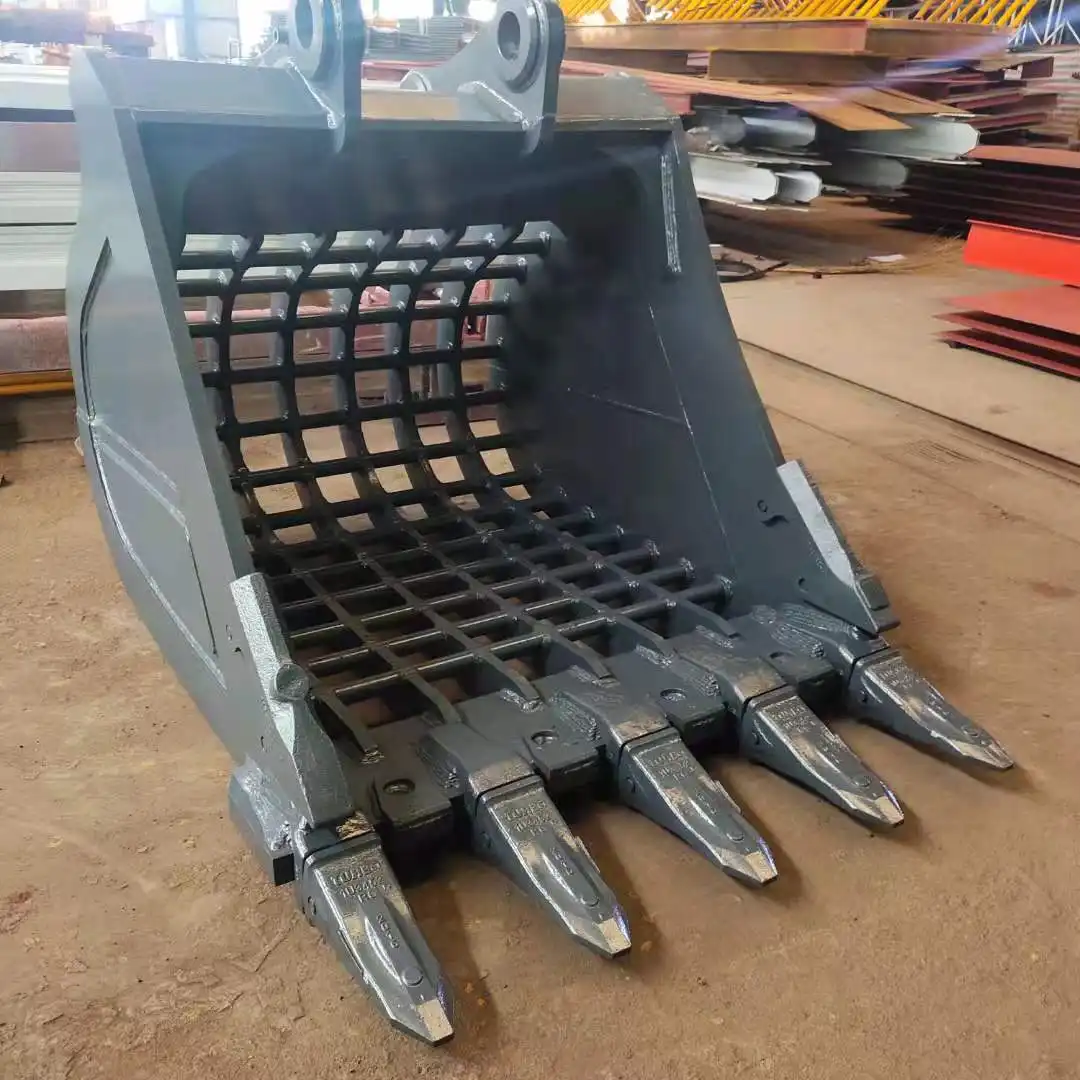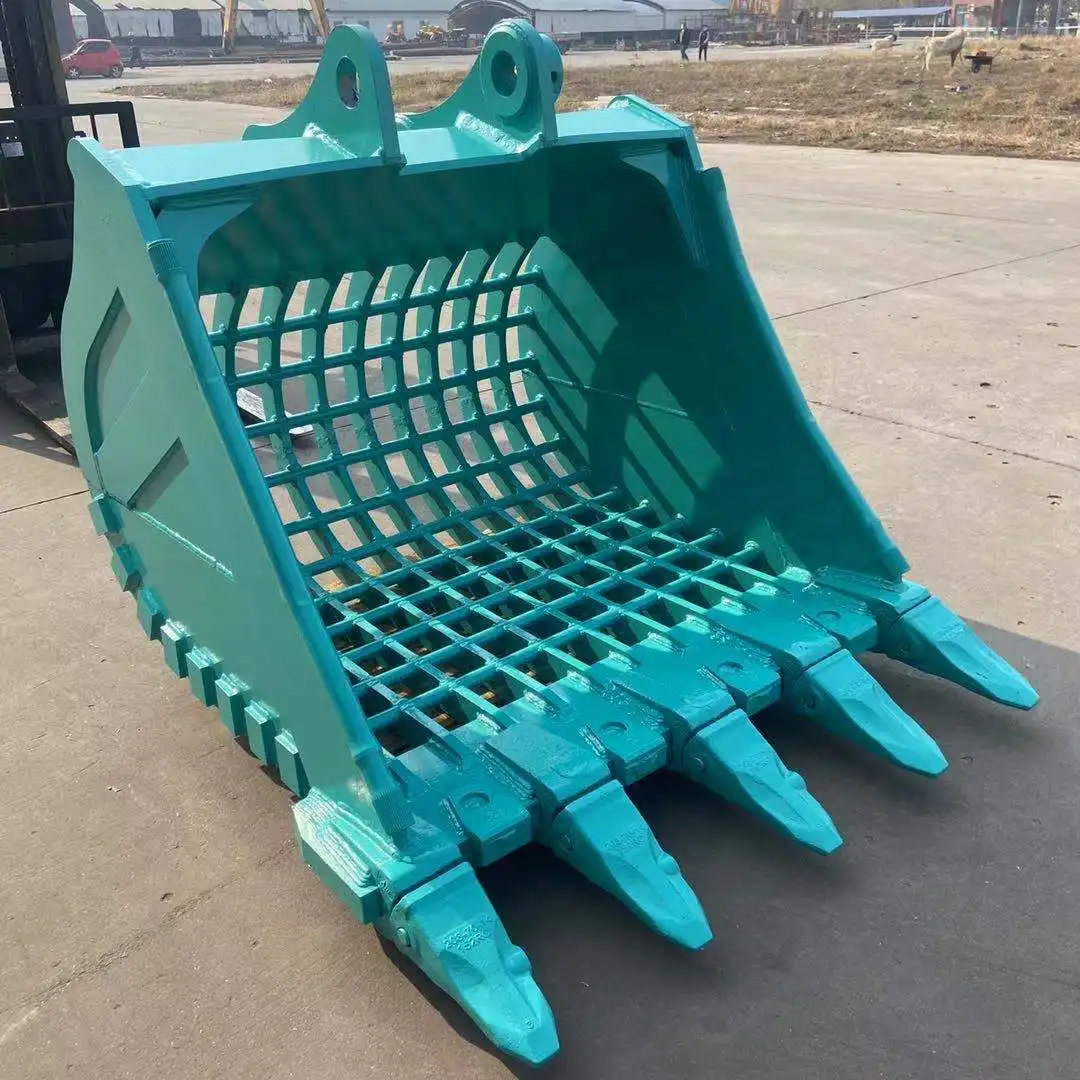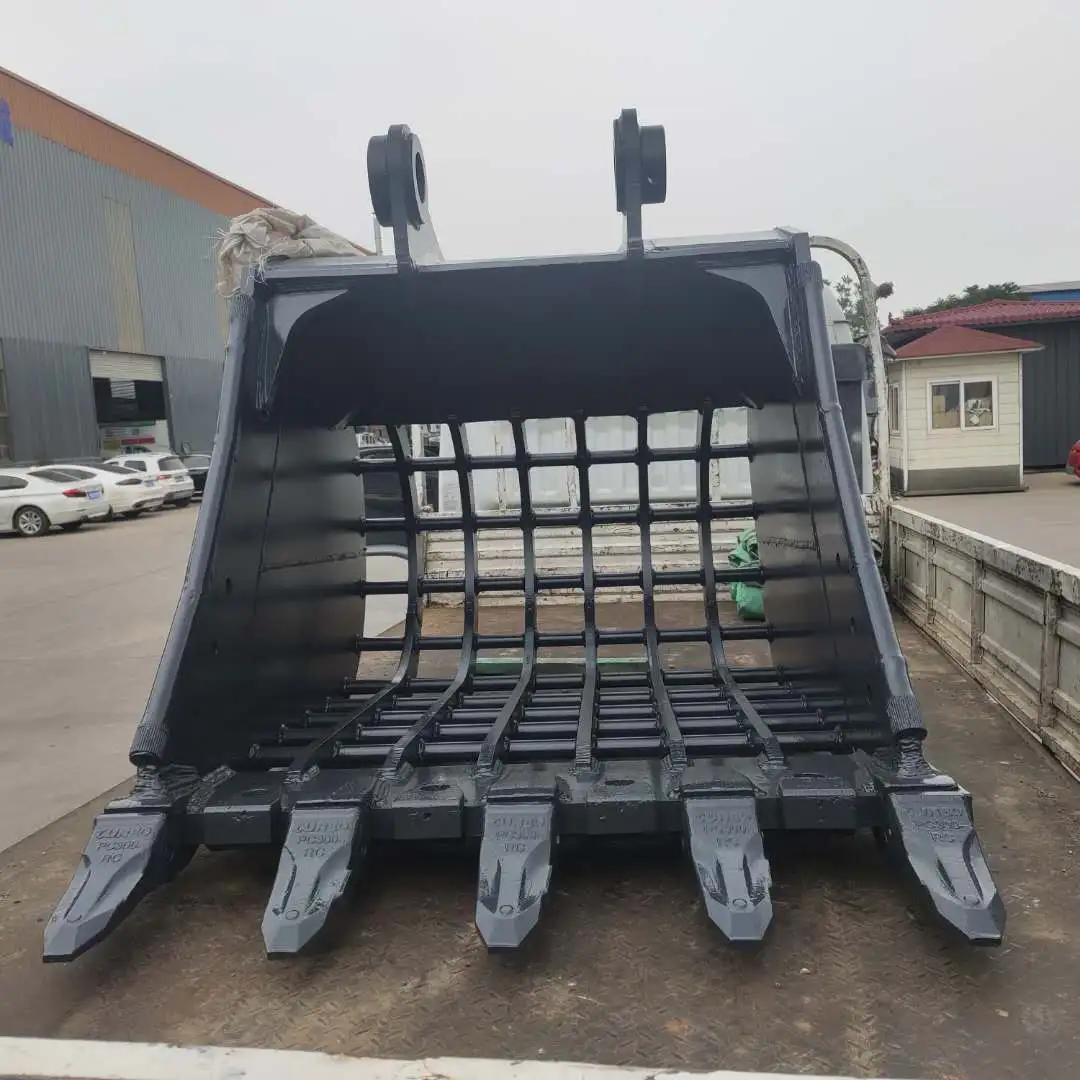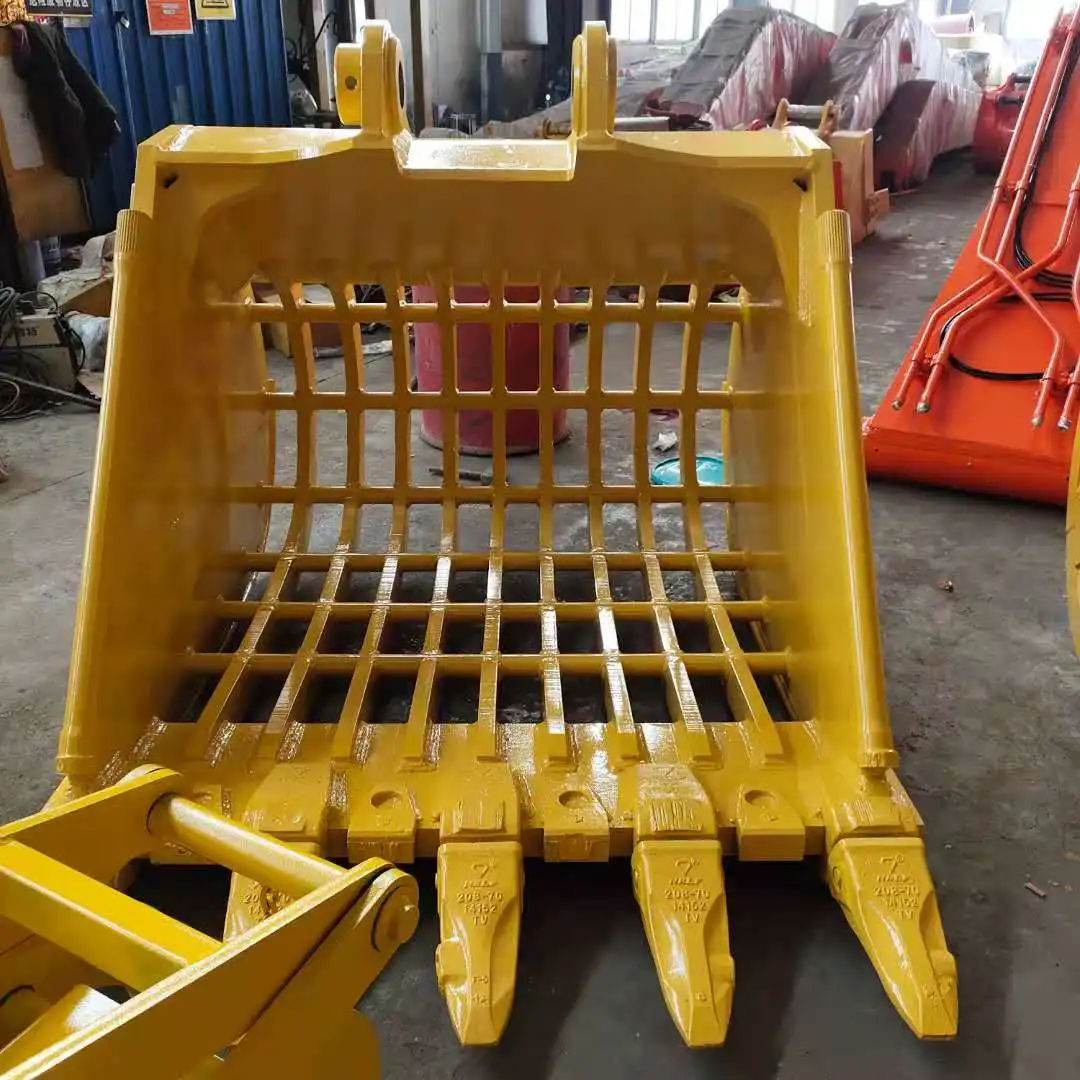Best Excavator Screening Buckets for Soil, Rocks, and Debris
Excavator screening buckets are game-changers in the construction, mining, and waste management industries. These versatile attachments excel at separating soil, rocks, and debris, boosting productivity and reducing on-site waste. With their ability to sift through various materials efficiently, the best screening buckets can significantly streamline your operations. Let's dive into the top-rated options and learn how to choose the ideal bucket for your specific needs.

Top-Rated Buckets for Various Material Types
When it comes to selecting the right screening bucket, understanding the different types available for specific materials is crucial. Let's explore the top-rated options for soil, rocks, and debris to help you make an informed decision.
High-Performance Soil Screening Buckets
Soil screening buckets are designed to efficiently separate soil from other materials, making them ideal for landscaping and construction projects. The best soil screening buckets feature adjustable mesh sizes, allowing you to customize the screening process based on your specific requirements. Look for buckets with high-quality steel construction and reinforced edges to ensure durability and longevity.
One standout option is the HydraScreen S3 Bucket, known for its exceptional soil separation capabilities. It boasts a unique curved screen design that maximizes material flow and reduces clogging. The S3 Bucket also features easily replaceable screens, making maintenance a breeze.
Heavy-Duty Rock Screening Attachments
Rock screening attachments need to be tough enough to handle abrasive materials without compromising efficiency. The best rock screening buckets are built with extra-strong steel and feature reinforced teeth to break down larger rocks during the screening process.
The RockHound XL Screening Bucket stands out in this category. Its innovative design incorporates a reversible drum screen that can handle rocks up to 24 inches in diameter. The bucket's high-torque hydraulic motor ensures consistent performance even in challenging conditions.
Versatile Debris Sorting Buckets
Debris sorting buckets are essential for recycling and waste management operations. These buckets need to handle a wide range of materials, from wood and plastic to metal and concrete. Look for buckets with multiple screen options and easy-to-change meshes to adapt to different debris types quickly.
The MultiSort Pro Bucket is a top choice for versatile debris sorting. It features a patented rotary system that allows for continuous screening, even with wet or sticky materials. The bucket's interchangeable screens can be swapped out in minutes, making it adaptable to various job site requirements.

Screening Efficiency: Soil vs. Rocks vs. Debris
Understanding the nuances of screening different materials is key to maximizing your excavator screening bucket's efficiency. Let's compare the screening processes for soil, rocks, and debris to help you optimize your operations.
Soil Screening: Optimal Mesh Sizes and Techniques
Effective soil screening requires careful consideration of mesh sizes and screening techniques. The ideal mesh size depends on your specific application, but generally ranges from 20mm to 80mm for most soil screening tasks. Smaller mesh sizes are suitable for fine topsoil production, while larger openings work well for coarser materials.
To enhance soil screening efficiency, consider using a bucket with a star-shaped screen design. This configuration helps prevent clogging and allows for better material flow. Additionally, maintaining a consistent bucket angle during operation can significantly improve screening results.
Rock Screening: Durability and Production Rates
Rock screening demands robust equipment and specialized techniques to achieve high production rates. Mesh sizes for rock screening buckets typically range from 50mm to 150mm, depending on the desired end product. Larger openings are suitable for primary screening, while smaller meshes are used for producing finer aggregates.
To maximize durability and production rates when screening rocks, look for buckets with hardened steel components and wear-resistant liners. Some advanced rock screening buckets incorporate vibrating mechanisms to enhance material separation and reduce the risk of jamming.
Debris Screening: Separation and Recycling Solutions
Debris screening presents unique challenges due to the varied nature of materials involved. Effective debris screening buckets often feature multiple screen layers with different mesh sizes to sort materials efficiently. Mesh sizes can range from 20mm for fine sorting to 100mm or more for initial separation.
To optimize debris screening and recycling, consider using a bucket with a trommel-style design. This rotating drum configuration allows for continuous screening and helps separate materials based on size and density. Some advanced debris screening buckets also incorporate magnetic separators to remove metal contaminants automatically.

How to Choose the Ideal Bucket for Mixed Materials?
Selecting the perfect excavator screening bucket for mixed materials requires a thoughtful approach. By considering factors such as material composition, job site requirements, and budget constraints, you can make an informed decision that maximizes your equipment's efficiency and productivity.
Analyzing Material Composition for Bucket Selection
Before choosing a screening bucket, it's essential to assess the typical material composition you'll be working with. Start by collecting samples from your job sites and analyzing the percentage of soil, rocks, and debris. This information will help you determine the most suitable bucket type and screen configuration.
For instance, if your material consists primarily of soil with some small rocks, a bucket with a single-layer screen might suffice. However, if you're dealing with a more complex mix of materials, including larger rocks and debris, a multi-layer screening bucket would be more appropriate.
Matching Bucket Features to Job Site Requirements
Consider your specific job site needs when selecting a screening bucket. Factors such as required output volume, desired end product size, and available power from your excavator all play crucial roles in determining the ideal bucket.
For high-volume operations, look for buckets with larger capacities and efficient screening mechanisms. If you need to produce multiple material sizes, a bucket with interchangeable screens or adjustable mesh sizes would be beneficial. Additionally, ensure that the bucket's hydraulic requirements match your excavator's capabilities to avoid performance issues.
Balancing Cost and Performance in Screening Buckets
While it's tempting to opt for the most feature-rich screening bucket, it's important to balance cost and performance. Consider your long-term needs and potential return on investment when making your decision.
High-end buckets with advanced features like hydraulic screen adjustment or built-in crushing capabilities may come with a higher price tag but can significantly boost productivity in the right applications. On the other hand, a more basic model might be sufficient for occasional use or smaller-scale projects.

Choosing the best excavator screening bucket for soil, rocks, and debris is crucial for optimizing your operations. By carefully considering your specific needs, material types, and job site requirements, you can select a bucket that enhances productivity and efficiency. Remember to balance performance with cost-effectiveness and prioritize durability for long-term value. With the right screening bucket, you'll be well-equipped to tackle a wide range of projects with ease and precision.
FAQ
①What is the average lifespan of an excavator screening bucket?
The lifespan of an excavator screening bucket varies depending on usage and maintenance, but typically ranges from 3 to 7 years with proper care.
②Can I use the same screening bucket for different material types?
While some versatile buckets can handle multiple material types, it's often more efficient to use specialized buckets for specific materials like soil, rocks, or debris.
③How often should I replace the screens in my excavator bucket?
Screen replacement frequency depends on usage and material abrasiveness. Generally, inspect screens regularly and replace them when you notice significant wear or reduced efficiency.
④Are there any safety considerations when using excavator screening buckets?
Yes, always follow manufacturer guidelines, ensure proper attachment to the excavator, and keep the work area clear of personnel during operation.
⑤Can excavator screening buckets be used for wet materials?
Some buckets are designed to handle wet materials, but efficiency may be reduced. Look for models with self-cleaning features or larger mesh sizes when working with wet or sticky substances.
Excavator Screening Bucket For Sale
At Tiannuo Machinery, we offer a wide range of high-quality excavator screening buckets designed to meet the diverse needs of the construction, mining, and waste management industries. Our product line includes specialized buckets for railway maintenance, excavator modifications, and various engineering applications. Whether you need a rotating tilting bucket for ballast screening or a high-frequency screening bucket for precise material separation, we have you covered. Our screening buckets feature a bucket capacity of 0.4 m³ (customizable), grid specifications of 55 x 55 mm, and are constructed using durable Q460 + WH60C materials. These buckets are ideal for railway ballast screening operations and can significantly enhance your project's efficiency. For more information or to discuss your specific requirements, contact us at tn@stnd-machinery.com.
References
- Smith, J. (2022). Excavator Attachments: A Comprehensive Guide to Screening Buckets. Construction Equipment Journal, 45(3), 78-85.
- Johnson, A. & Brown, T. (2021). Optimizing Soil Screening Techniques in Modern Construction. Journal of Civil Engineering, 33(2), 112-124.
- Davis, M. (2023). Advancements in Hydraulic Screening Bucket Technology. Heavy Equipment Review, 18(4), 56-63.
- Wilson, R. (2022). Material Density and Its Impact on Screening Efficiency in Construction. International Journal of Construction Management, 12(1), 33-45.
- Thompson, L. (2023). Cost-Benefit Analysis of Implementing Screening Buckets in Excavation Projects. Construction Economics, 28(2), 89-97.
- Lee, S. & Park, H. (2021). Innovative Applications of Excavator Attachments in Recycling Industries. Waste Management and Research, 39(3), 201-212.
About Author: Arm
Arm is a leading expert in the field of specialized construction and railway maintenance equipment, working at Tiannuo Company.

